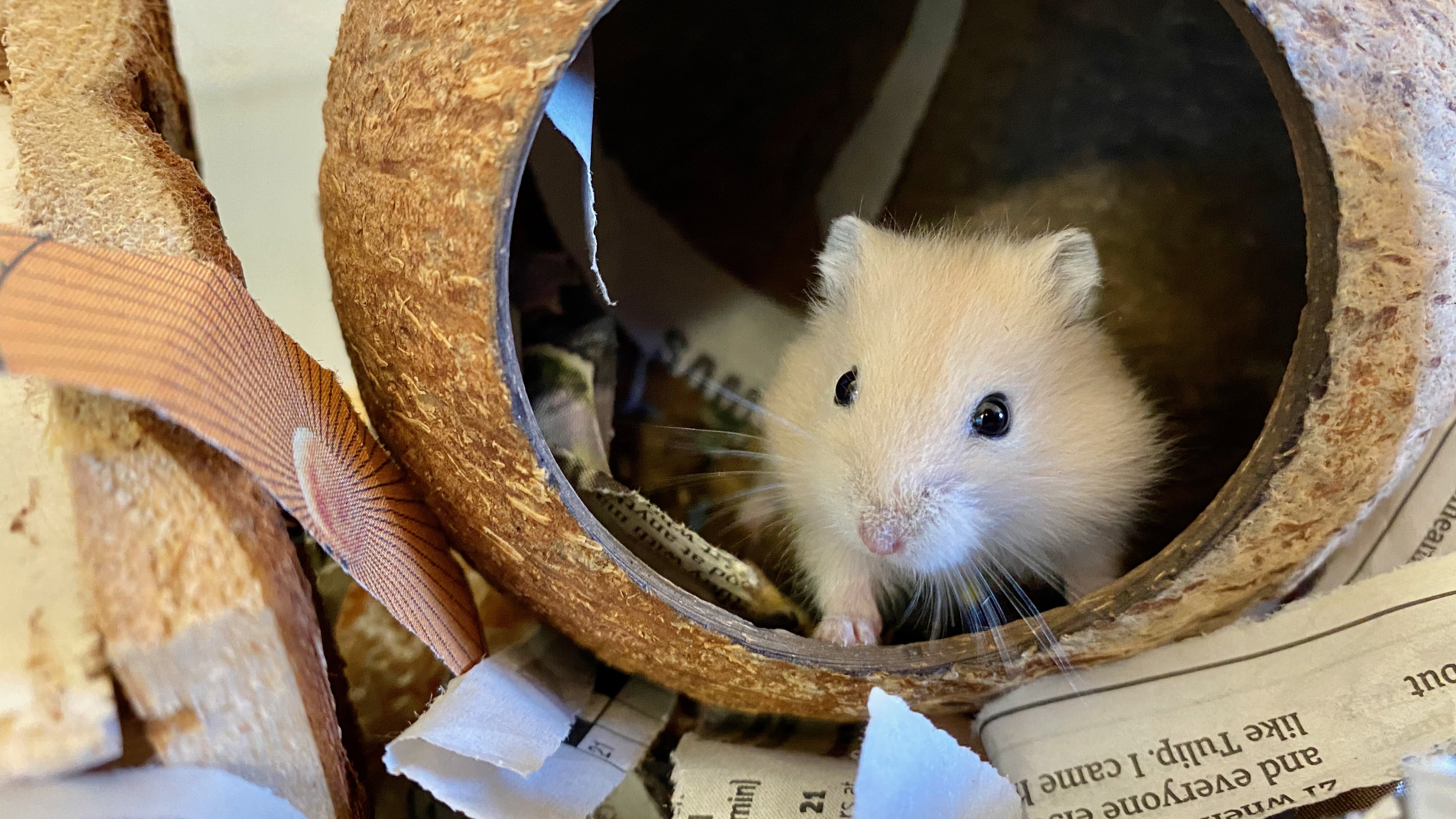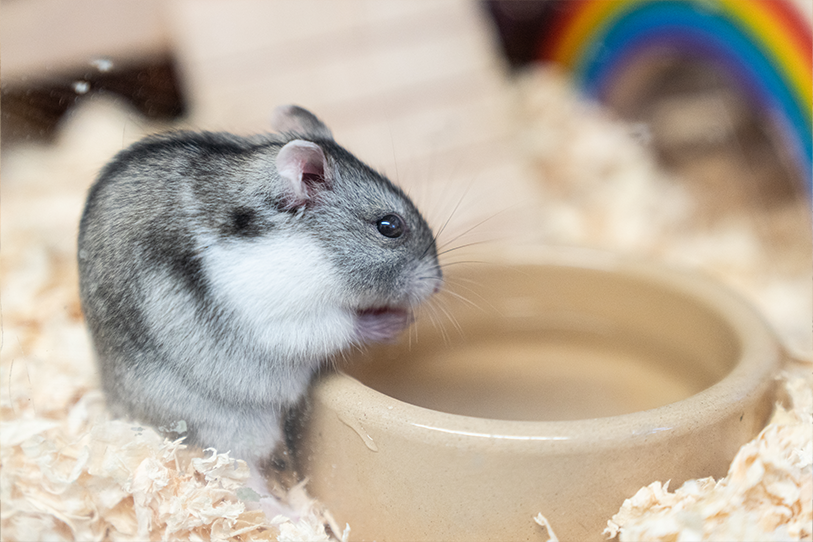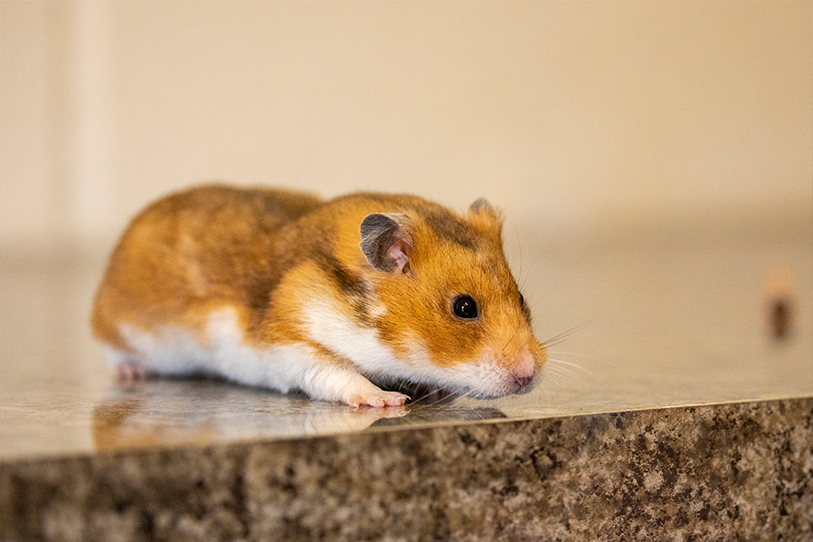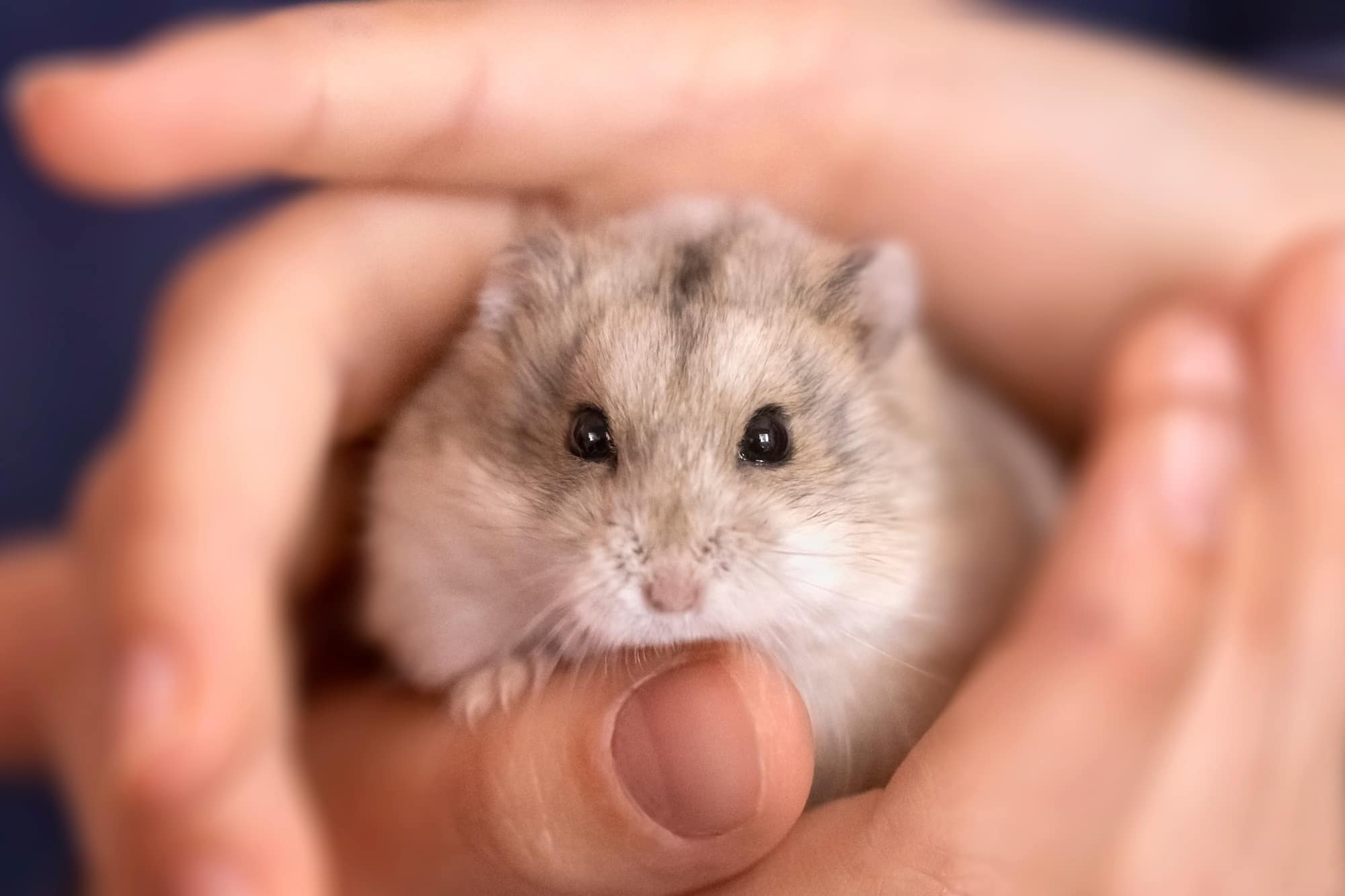How to look after hamsters
Hamsters are popular pets and it's not hard to see why. It’s fun to watch them nibbling treats, running on wheels and storing snacks in their cheeks. But though they’re sometimes thought of as easy, ‘starter’ pets, these curious rodents need lots of special care and attention. Here’s how to look after their welfare.
Top tip!
Did you know: Hamsters have stretchy pouches in their cheeks for carrying food. The Arabic name for Syrian hamsters translates to ‘Mr Saddlebags’!
Home
-
Line a deep cage, with narrow bars and a plastic base, with dust-free wood chips.
-
Give your hamster hay, shredded paper or cardboard so they can build cosy nests.
-
Keep your cage in a quiet room, away from direct sun, drafts of cold air, and electrical items computers, as hamsters hear ‘ultrasound’ – an annoying high-pitched noise.

Food
-
Give your pet ‘hamster pellets’ or hamster seed mixes. Hamsters like to store food for later, but remove any hidden food that could go mouldy.
-
A pinch of chopped greens, root vegetables or apples make healthy treats. But some fruit and veg – like grapes and rhubarb – can make them sick.
-
Always keep your hamster’s bottle topped up and check the tube daily for blockages.

Natural behaviour
-
Hamsters are nocturnal, which means they like to sleep during the day and perk up at night. So spend time with them as the sun is coming up or setting.
-
Hamsters are curious and love keeping busy! A large, axle-free wheel with a non-slip surface, fastened to a cage, is great for exercise. And cardboard or plastic tunnels are fun to explore.
-
Rosewood chews and bark chips, sold at most pet shops, keep hamster teeth healthy and short along with a healthy diet.

Top tip!
Toys called ‘hamster balls’ are made so hamsters can roll around a room. But these toys don’t allow hamsters to explore using their sensitive noses and whiskers, so being inside them is stressful and scary – like having a blindfold on.
Health
-
Most hamsters live between two and four years.
-
Hamsters have to be on constant lookout for predators in the wild, so they find noisy, unfamiliar things especially stressful. Keep them somewhere quiet and calm.
-
Hamsters don’t show clear signs of pain, so get in touch with a vet if you spot any changes in the way they look or act.

Company
-
Dwarf hamsters (such as Roborovski or Campbell's hamsters) can sometimes live in same sex pairs or trios with hamsters from the same litter – though they don't need company to be happy. Syrian and Chinese hamsters should always live alone.
-
To avoid fighting and unwanted babies. stick to all-female or all-male groups of dwarf hamsters who have grown up together.
-
Hamsters, especially Syrian hamsters, can learn to enjoy being handled. Let them sniff your hands, and once they feel comfortable, cup them with both hands to pick them up. Hold them gently over a surface, as hamsters are delicate and can hurt themselves if they fall.
Top tip!
Did you know that there are 24 breeds of hamster? The most popular pets are the Syrian, Russian dwarf, Roborovski dwarf and Chinese hamsters.
